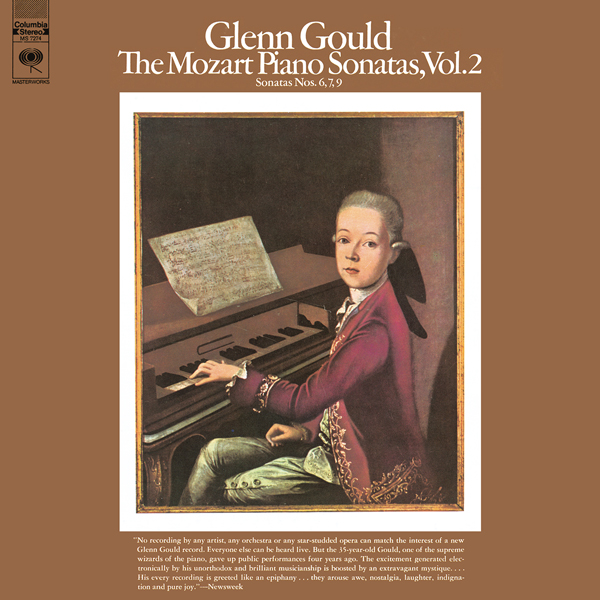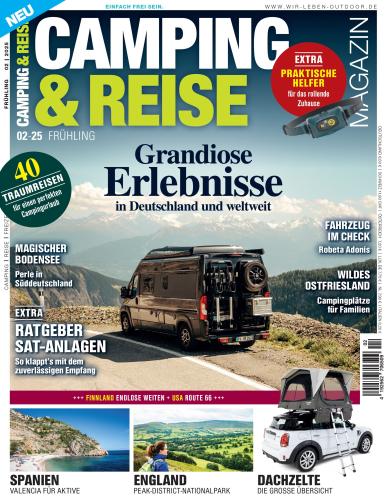
Wolfgang Amadeus Mozart – Piano Sonatas Nos. 6, 7 & 9 – Glenn Gould (1969/2015)
FLAC (tracks) 24 bit/44,1 kHz | Time – 00:49:39 minutes | 463 MB | Genre: Classical
Studio Masters, Official Digital Download – Source: Qobuz | @ Columbia
“Even though ‘shorter is better’ represents my attitude in regard to Mozart generally, I’d have to say that the sonata in D, K. 284, which is probably the longest of the sonatas, is my favorite.” The critics were on the whole benevolent and at most poked fun at some of Gould’s ultra-fast tempos.
Glenn Gould could not have timed his professional entrance to the recording studio any better than with his première recording in 1955. Five years had passed since the lacquer disc medium had been retired and the industry had fully embraced tape recording.
The availability of digital tools for remastering and restoration has never been greater, or more refined. Yet everything starts with the original masters. Columbia Records kept very good archives of session logs, documenting which takes were recorded on which job reel, and to which musical work they belong. Gould often worked with the producer on choosing how the takes would be edited together, marking directly in the score where one take would end and the next would begin. The session reels were assembled into a “master edit reel.” If the master edit reel was mono or stereo, it would go directly to mastering, where the proper EQ (equalization) was applied for generating a “vinyl master.” If the master edit was three-track or higher, a master stereo mix would be made; this might be a generation before the vinyl master, should further vinyl EQ be necessary for LP manufacturing. Thankfully, the archives have preserved previous generations, so today we can ignore the numerous later copies and work with the original master edits.
In the remastering studio, we maintain original analogue Studer A80, A820 and A807 machines for playback of the Gould recordings. Most of these machines are modified by JRF Magnetics in order to ensure perfect reading from the playback head stack. The signal is converted to DSD via Mytek digital converters, all the while being monitored through Bowers & Wilkins Nautilus 802 series speakers (powered by Krell 600 watt amplification). This level of professional playback ensures that we hear exactly what was recorded at the studio without coloration and with greater clarity than even Glenn Gould had heard. The audio is treated in the computer using Cube-Tec restoration tools when needed, tools that allow us to remove such noises as electrical tics, pops, random studio noises, or even electrical buzzing.
Now, in 2015, we have accomplished a project that took more than three years: the analogue (and digital) remastering of Gould’s entire recorded legacy for Columbia. Remastering and restoration is not, however, a process of creating something new, but the art of bringing clarity and enhancement to the original masterpiece. Just as the restoration of the Sistine Chapel brought new life to Michelangelo’s paintings, so we’ve tried to bring new life to Glenn Gould’s recordings.
Tracklist:
Wolfgang Amadeus Mozart (1756-1791)
1 Sonata No. 6 in D Major for Piano, K. 284: I. Allegro
2 Sonata No. 6 in D Major for Piano, K. 284: II. Rondeau en Polonaise: Andante
3 Sonata No. 6 in D Major for Piano, K. 284: III. Theme and Variations
4 Sonata No. 7 in C Major for Piano, K. 309: I. Allegro con spirito
5 Sonata No. 7 in C Major for Piano, K. 309: II. Andante un poco Adagio
6 Sonata No. 7 in C Major for Piano, K. 309: III. Rondo: Allegretto grazioso
7 Sonata No. 9 in D Major for Piano, K. 311: I. Allegro con spirito
8 Sonata No. 9 in D Major for Piano, K. 311: II. Andante con espressione
9 Sonata No. 9 in D Major for Piano, K. 311: III. Rondo: Allegro
Personnel:
Glenn Gould, piano
Download:



















![Glenn Gould - The Complete Columbia Album Collection (2015 Remastered Edition) [Qobuz FLAC 24bit/44,1kHz] Glenn Gould - The Complete Columbia Album Collection (2015 Remastered Edition) [Qobuz FLAC 24bit/44,1kHz]](https://getimg.link/images/imgimgimg/uploads/2017/07/2bHwfbA.jpg)
![Glenn Gould - Bach: Partitas Nos. 1 - 6, BWV 825 - 830 by Glenn Gould (2022) [FLAC 24bit/96kHz] Glenn Gould - Bach: Partitas Nos. 1 - 6, BWV 825 - 830 by Glenn Gould (2022) [FLAC 24bit/96kHz]](https://imghd.xyz/images/2023/01/16/fuzeajuellnza_600.jpg)
![Glenn Gould - Gould & Bach: Perfect Match (2022) [FLAC 24bit/44,1kHz] Glenn Gould - Gould & Bach: Perfect Match (2022) [FLAC 24bit/44,1kHz]](https://imghd.xyz/images/2022/10/11/odtl776gtl5dc_600.jpg)
![Maria Callas - Remastered The Complete Studio Recordings 1949-1969 (2014) [Qobuz FLAC 24bit/96kHz] Maria Callas - Remastered The Complete Studio Recordings 1949-1969 (2014) [Qobuz FLAC 24bit/96kHz]](https://getimg.link/images/imgimgimg/uploads/2018/12/Vw7IHlv-1.jpg)
![Ronald Brautigam - Beethoven: The Complete Piano Sonatas (2014) [eClassical FLAC 24bit/44,1/88,2kHz] Ronald Brautigam - Beethoven: The Complete Piano Sonatas (2014) [eClassical FLAC 24bit/44,1/88,2kHz]](https://getimg.link/images/imgimgimg/uploads/2016/10/pzFKc5g.jpg)
![VA - Woodstock 50: Back To The Garden: The Anniversary Experience Day 2 (2019) [FLAC 24bit/48kHz] VA - Woodstock 50: Back To The Garden: The Anniversary Experience Day 2 (2019) [FLAC 24bit/48kHz]](https://getimg.link/images/imgimgimg/uploads/2019/12/iGXe3p9.jpg)
![Mari Kodama - Beethoven: The Complete Piano Sonatas (2014) [HDTracks 24bit/96kHz] Mari Kodama - Beethoven: The Complete Piano Sonatas (2014) [HDTracks 24bit/96kHz]](https://getimg.link/images/imgimgimg/uploads/2017/03/PzPMGuc.jpg)
![The Avison Ensemble - Arcangelo Corelli: Opus 1 & 3 - Church Sonatas (2014) [LINN FLAC 24bit/96kHz] The Avison Ensemble - Arcangelo Corelli: Opus 1 & 3 - Church Sonatas (2014) [LINN FLAC 24bit/96kHz]](https://getimg.link/images/imgimgimg/uploads/2017/07/ZheRfz2.jpg)
![The Avison Ensemble - Arcangelo Corelli: Opus 2 & 4 - Chamber Sonatas (2013) [LINN FLAC 24bit/96kHz] The Avison Ensemble - Arcangelo Corelli: Opus 2 & 4 - Chamber Sonatas (2013) [LINN FLAC 24bit/96kHz]](https://getimg.link/images/imgimgimg/uploads/2017/07/E3FQXlH.jpg)
![Carl Nielsen - Symphonies Nos. 1-6 - London Symphony Orchestra, Sir Colin Davis (2015) [Blu-Ray Pure Audio Disc + DSF Stereo DSD64/2.82MHz] Carl Nielsen - Symphonies Nos. 1-6 - London Symphony Orchestra, Sir Colin Davis (2015) [Blu-Ray Pure Audio Disc + DSF Stereo DSD64/2.82MHz]](https://getimg.link/images/imgimgimg/uploads/2015/09/Wnf48VE.jpg)
![Wolfgang Amadeus Mozart - Piano Sonatas Nos. 8, 10, 12 & 13 - Glenn Gould (1972/2015) [Qobuz FLAC 24bit/44,1kHz] Wolfgang Amadeus Mozart - Piano Sonatas Nos. 8, 10, 12 & 13 - Glenn Gould (1972/2015) [Qobuz FLAC 24bit/44,1kHz]](https://getimg.link/images/imgimgimg/uploads/2016/07/SUtNMy8.jpg)
![Rachel Podger, Gary Cooper - Mozart: Complete Sonatas for Keyboard & Violin (2004-09) [DSF DSD64/2.82MHz] Rachel Podger, Gary Cooper - Mozart: Complete Sonatas for Keyboard & Violin (2004-09) [DSF DSD64/2.82MHz]](https://getimg.link/images/imgimgimg/uploads/2018/08/CtydJ1g.png)
![Wolfgang Amadeus Mozart - Piano Sonatas Nos. 1-5 - Glenn Gould (1968/2015) [Qobuz FLAC 24bit/44,1kHz] Wolfgang Amadeus Mozart - Piano Sonatas Nos. 1-5 - Glenn Gould (1968/2015) [Qobuz FLAC 24bit/44,1kHz]](https://getimg.link/images/imgimgimg/uploads/2016/05/LJcnUQE.jpg)
![Wolfgang Amadeus Mozart - Piano Sonatas Nos. 11, 15 & 16, Fantasia - Glenn Gould (1973/2015) [Qobuz FLAC 24bit/44,1kHz] Wolfgang Amadeus Mozart - Piano Sonatas Nos. 11, 15 & 16, Fantasia - Glenn Gould (1973/2015) [Qobuz FLAC 24bit/44,1kHz]](https://getimg.link/images/imgimgimg/uploads/2016/07/5EUDrs9.jpg)
![Les Dominos & Florence Malgoire - Jacquet de la Guerre: Violin Sonatas (2011) [FLAC 24bit/44,1kHz] Les Dominos & Florence Malgoire - Jacquet de la Guerre: Violin Sonatas (2011) [FLAC 24bit/44,1kHz]](https://getimg.link/images/imgimgimg/uploads/2019/11/0gpeED0.jpg)